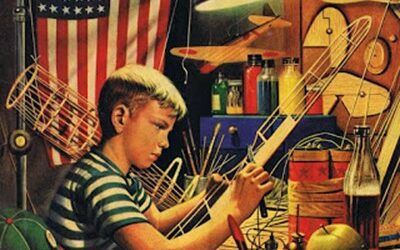The caduceus evolved as a symbol long before ancient Egypt, where the winged rod with two serpents entwined was imaged with the Egyptian god Hermes. The title “Hermes Trismegistus” or “Thrice Great” implies that he knew how to use three (thrice) pillars for astronomical reading, and calculating longitude, distance, and elevation; the Hermetic tradition traces its roots to him. Later in Roman mythology, the caduceus is seen with Mercury, the messenger of the gods. Today, the planetary symbol for Mercury is a representation of the caduceus. Mercury presides over commerce, and his rod, the caduceus, has become a symbol of commercial success. This symbol alludes to the royal orb and scepter, which embody the concepts of knowledge, health, and leadership – qualities attributed to those who could measure and record the movements of the heavens.
The caduceus is associated with order. The word caduceus is from the Greek for herald’s staff, based on the word eruko, meaning restrain, control. A legend from 1688 tells this story: In Acadia, Apollo found two serpents biting each other. He thrust the rod between the quarreling snakes; they became immediately reconciled and wrapped around the staff. Subsequently, the staff came to be seen as a rod of peace, and is carried by messengers as a symbol of peace and protection. The United States House of Representatives has a staff with a caduceus on top, which is used to restore order when chaos enters House proceedings.
The caduceus has its beginning in pre-history, earlier than 12,000 BC, when Ashera poles were used for astronomical observations to measure movement of the stars, and to establish a north/south line; an early surveyor’s tool. Placed in the ground, the rods were used to align the stones with the heavenly bodies. The ashera pole’s line of sight between earth and sky became the central rod of the caduceus – the axis mundi, representing the axis of the earth, which runs between the North and South Poles, a symbol of the path between Earth and Heaven.
The globe atop the rod depicts a beautiful polished globe atop the Ashera pole; the reflection of the sun off the globe allowed it to be seen from a great distance in any direction, facilitating accurate alignment. (This is similar to the sun reflecting off the rear windshield of a car, shining in your eyes no matter which lane you are in.)
The wings adorning the pole and globe have their roots in a symbol for true north, which at that time was the star Deneb in the constellation Cygnus, the Swan. Cygnus is the basis for many bird mythologies, and as such, the wings of the caduceus also represent the stork bringing a new baby to Earth, as well as Eider ducks comforting the child with warm down, and the goose and swan eating poisonous snakes, protecting the child. If a child died, the swan escorted the tiny soul up the axis mundi to heaven. Wings are also a symbol for transcendence, moving time, and connection with the heavenly.
The snakes around the rod represent ancient mariners, the Vanir, who were at one time referred to as the “snake-headed people”. Later associations to the snakes around the caduceus developed around 4000 BC, when, along with owls and cats, non-poisonous snakes protected the stores of grain from rodent infestation, making friends of the old poisonous enemies; the cats of the Celtic goddess Freya have their roots in these protectors of the grain. In alchemy during the 14th and 15th centuries, the entwined serpents symbolize opposites in dualism, in perfect union, linking the caduceus symbol to alchemy, perhaps leading to its association with medicine, although there is no history for that use. Although the classic caduceus is found on everything from ambulances and nurses’ pins to tubes of toothpaste, it is more accurately a symbol of commerce and the “order of business”.

Development of the symbol – M. Snyder and Duncan-Enzmann

Aesculapius – M. Snyder
A more accurate image as a symbol for the medical world would be the Aesculapius rod, a rod with a single snake wrapped around it. This symbol was derived from the method Doctor Aesculapius (1200 BC) found as a cure for a condition where parasitic worms were present under the skin. He discovered that the worms would attach to a stick through a slit in the skin, and he could wind them around it, removing them. The physician Aesculapius came to be worshiped as a god of healing. Temples, called aesculapions, developed; people believed they could be healed merely by sleeping in them. The rod of Aesculapius symbol is similar to the description of the serpent Moses held up before the Israelites (Numbers 21:6-9), and is commonly used by veterinarians, medical and nursing associations, the Medical Corps, and health organizations.




